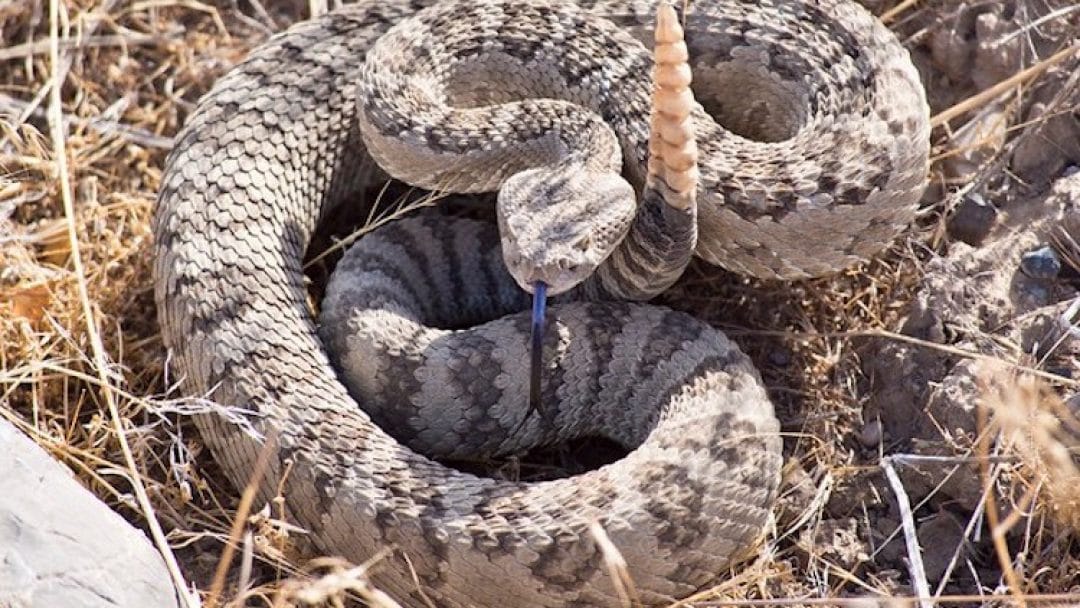When sunshine and temperatures in the 70s and 80s start to show up regularly on Phoenix-area weather forecasts, residents and visitors alike are eager to take advantage of the gorgeous conditions.
The same thing is true for rattlesnakes.
High temperatures approaching 80 degrees are like a wake-up call for snakes. The warmer weather encourages them to come out and become more active after their winter rest.
Daniel Marchand, curator with the Phoenix Herpetological Society, said spring is the time to start watching out for rattlesnakes.
“The snakes that are (hibernating) closer to the surface, say they’re under a metal building in the backyard, that building will start to heat up and it will trigger them to come out,” Marchand said. “The ones that are deeper in the ground, they’ll come out as it warms up.”
While many snakes pose no threat to people, there are rattlesnakes and other venomous species in the state. According to the Arizona Game & Fish Department, there are 13 species of rattlesnakes in the state.
In the Phoenix area, places such as north Scottsdale, Gold Canyon and other areas with lots of open spaces see the most activity. As the weather heats up and dries out, snakes may come closer to homes in search of food and water.
Fortunately, it’s usually not hard to avoid close encounters with rattlesnakes.
Be aware of the possibility of snakes and be on the lookout. Avoid reaching under rocks or shrubs without looking first. Carry a flashlight when walking outside at night.
“If you can see where you’re placing (your hands and feet), you’ll see and know something is there,” Marchand said. “If you’re stepping over things, you could easily be stepping on something.”
If you’re out hiking, it’s important to stay on trails. Those cleared and compacted trails make it easier to spot snakes. Venturing off trail can lead to trouble.
Snakes blend into their environment. It helps them hunt for prey, but it also makes them harder for people to spot.
If you encounter a rattlesnake, the first thing you should do is step back, Marchand said.
A rattlesnake’s strike range is about a third of its body length. In most case that’s about 12-16 inches, he said. For the average adult, taking a step back will usually take you out of harm’s way.
“Most rattlesnakes around here are only about three feet long,” Marchand said. “We’ve seen a few snakes around 4 foot or maybe a bit over that, but not many.
“We have people all the time saying they have a six-footer in their yard, and we get there and it’s only about three feet long. Human nature is when you’re afraid of something, it looks larger than life.”
If you encounter a snake while hiking or biking, leave it alone. Warn other hikers or bikers about what you saw so they can avoid it as well.
If you or a companion is bitten, call 911 immediately. Information is also available from the Poison Control hotline, 800-222-1222.
If you encounter a snake in your yard, garage or home, get away and call a professional to come and safely remove it.
“What we don’t want is someone trying to remove the snake on their own,” Marchand said. “That’s what gets people in trouble.”
Marchand said most removal companies charge a fee for removing dangerous snakes, but it’s a small price compared to medical treatment for a snakebite.
“We charge $75 to remove a rattlesnake,” Marchand said. “Some companies charge up to about $200. A snake bite could end up costing you a lot more than that.”
Marchand said professionals can also offer guidance on how to make your yard less inviting to snakes.
- Eliminate rodents — a snake’s preferred food source — from around your home.
- Move woodpiles and remove junk to eliminate potential homes for snakes and their prey.
- Erecting a wall can deter snakes from entering your yard. Solid walls 4 feet high with a four-inch lip angling outward will discourage most snakes. Sink the bottom of the wall into the ground. Fill any tunnels burrowed by rodents.
- Install gates snugly against the ground.
- Keep walkways clear of brush.
- Light pathways around your home.
- If you encounter a snake on your property, call a snake-removal company or the non-emergency number for your local fire department. Keep an eye on the snake from a safe distance so you can direct responders to its location.
For other snake removal needs, homeowners can call the Phoenix Herpetological Society’s hotline at 602-550-1090 or the Arizona Herpetological Association at 480-894-1625. Both charge a small fee. There are also commercial animal control companies that will handle snakes.
Click here for more information.








